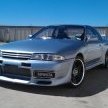Comments On Dyno Graphs
Announcements
-
Similar Content
-
Latest Posts
-
R34DE as in R34 with an RB25DE? So did you get this? Or you planning to? I'm not really sure what you're saying.
-
By Dose Pipe Sutututu · Posted
Possibly avoid using a Cometic one unless the deck/head surface are perfectly flat. I did have a look just then and forgiving gaskets such as Tomei or Nitto don't exist for the FJ20, however the Bar-Tek or Kameari ones look good and might do the trick. -
Because pipe threads for pipe things. M threads for bolt things. Throw some teflon sealant onto it and dust your hands off knowing you did the right thing, instead of going twice around the block to achieve a result using the wrong things. Of course, all of these solutions are ignoring the fact that the minimum thread pitch we're talking about here is 1.25mm, with the 1/4" in NPT or BPS being out around 1.4mm. You will need to know that the boss you're tapping has enough thickness for at least a few threads. That's one of the reasons that 1/8" is commonly used - because the pitch is <1mm. And why would you look to use 1/4" NPT in a BSP country anyway? Ugh.
-
By Dose Pipe Sutututu · Posted
Just throwing around ideas, does it need to be in the compressor cover? Why not the hot side piping? -
1/8NPT drill size = 8.7mm. Since the hole got messed up by me, it’s probably around 9mm. So 1/4” NPT would be next step. A drill size of around 11mm would be preferred there which is not way of my M12 (drill 10.5mm and tap M12 threads)
-





Recommended Posts
Create an account or sign in to comment
You need to be a member in order to leave a comment
Create an account
Sign up for a new account in our community. It's easy!
Register a new accountSign in
Already have an account? Sign in here.
Sign In Now